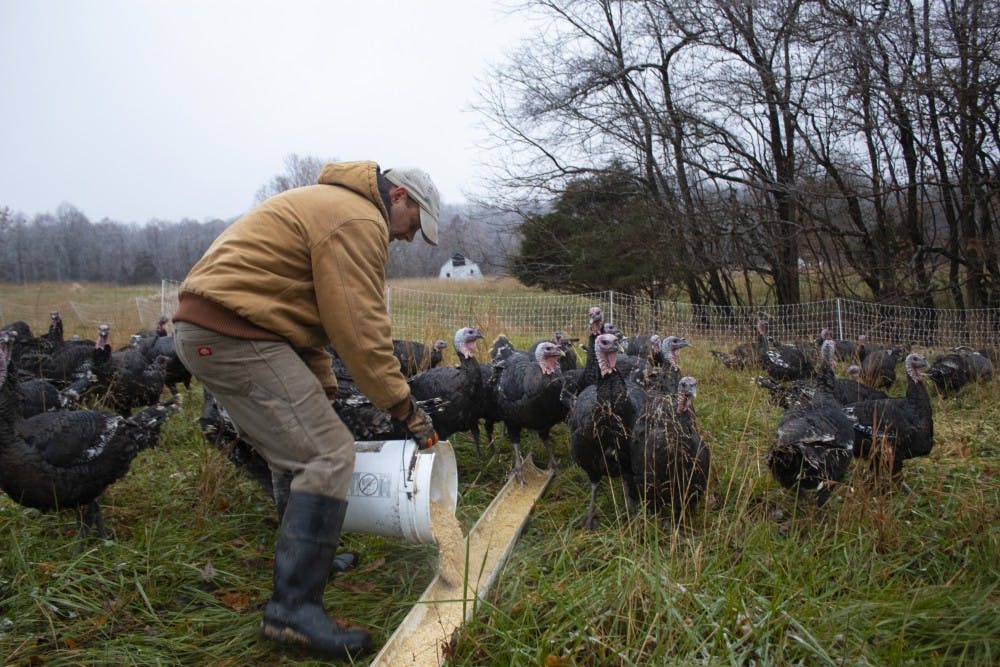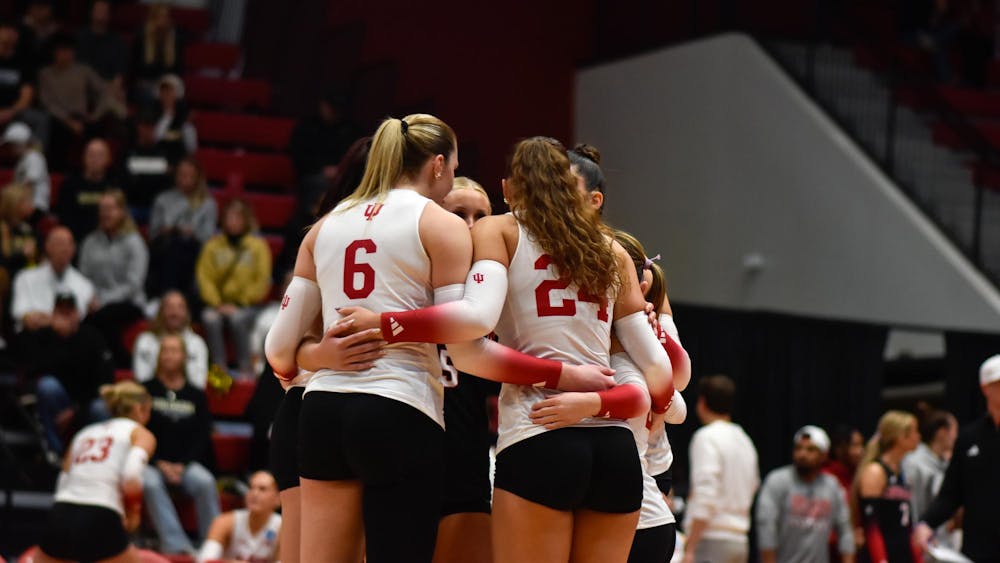ELLETTSVILLE, Ind. — Gobbles rose up and the turkeys crowded close to the fence. It was time for fresh grass.
The turkeys all watched as Larry Howard, their owner, started the process of moving their fencing on the hillside the turkeys were grazing on.
“The turkeys are the most expressive animals on the farm,” Howard said. “They’re the most enjoyable to be around, they’re very pleasant and we miss them probably the most compared to any other animal after they’re gone.”
Howard has owned and run Maple Valley Farm for 15 years with his wife and three children. They raise cattle, sheep, goats, pigs, egg-laying hens, meat chickens and turkeys using holistic approaches. In just three days, the family will butcher their turkeys for Thanksgiving and their customers will come to pick them up, first come, first served for sizes.
In Southern Indiana, the epicenter of Indiana’s turkey industry, turkeys are a microcosm of a bigger push and pull between the benefits and downfalls of industrial and small-farm animal production.

Paul Brennan, executive vice president of the Indiana State Poultry Association, has been in the turkey industry for nearly his whole life after getting a degree in animal sciences at Purdue.
He worked as a production manager for Farbest Foods, one of the two big turkey producers in Indiana and one of the largest turkey companies in the United States. He became interested in the food industry when he was young but wasn’t a farm kid.
“I saw that not everyone had access to high-quality protein at a relatively low price and I wanted to help with that,” Brennan said.
Brennan said most of the turkeys raised in Indiana are not raised for Americans’ Thanksgiving dinners but for further processing. Indiana turkeys are raised year-round and go on to become lunch meat, turkey sausages, turkey hot dogs, among other products Brennan said.
Unlike many of the hundreds of other Indiana farmers who raise turkeys indoors, Howard raises his turkeys outside in pastures and moves them multiple times a week to ensure fresh grass and grubs for the birds. With no agriculture background before Howard and his wife moved to a farm in 2003, he said they learned by failing.
After their first experience with sheep, they came to realize the fragility of the America’s farm animals today. Without the necessary supplements, vaccines, and chemical dewormers, the sheep would die.
“When we got the sheep, we found out all this stuff you had to do to keep them alive,” Howard said. “We realized we didn’t want all these chemicals in our meat.”
The Howard family went through the process of weaning their sheep and learned along the way the importance of healthy soil and the connection between their own diets and their health.
“There’s a complete chain from the soil microbes, to the animals, to our guts,” Howard said.
Over the years, Brennan said farmers who raise turkeys on large scales have improved an already efficient process. Now, however, Brennan said there is push by consumers to go back to the “old way” of raising turkeys outdoors, letting them freely graze.
“I never would have thought that we’d go back to practices before we improved efficiency,” Brennan said.
Brennan takes pride in the indoor facilities that turkeys are raised year-round in today because he said by keeping the turkeys inside, they are protected from weather and pathogens that may come from wild bird droppings.
Howard acknowledges that the practices of mass producers are far more efficient than his practices. But when it comes to nutrition, he said he does not believe these practices make a nutrient rich bird.

While Howard only raises 40 to 60 turkeys a year, he has never had health issues with his turkeys. He said he mainly relies on the birds’ hardy immune systems which he believes develop from natural grazing, the grain supplement they are given and being outdoors.
“The way to look at disease is— it’s dependent not on the presence of pathogens but on the immune system that that pathogen finds its way into,” Howard said.
By the time Howard finished moving the fencing, the turkeys strutted cautiously into the untouched area and began gulping down the fresh grass. Larry Howard and his 15-year-old daughter, Elena Howard, put out large bowls of water and troughs of supplemental non-GMO grain feed. Howard said this helps the birds, who are omnivores, get all the nutrition they need.
“People always tell us that it’s the best turkey they ever had,” Howard said. “The first time I bit into the dark meat, it was so rich and so incredible I was like, ‘Oh man this is like eating chocolate cake.’”
As farmers like Larry Howard become more attractive to consumers, Brennan is becoming concerned. As more regulations and requirements are put on farmers, prices will rise, making turkey less accessible to everyone. Howard does charge more than the average price for his turkeys because of the extra work put into raising them.
“Low-cost, high-quality protein is key for population growth,” Brennan said. “We’ve got to produce food efficiently. We need to produce food that is accessible to everyone.”
Larry Howard said he wants to replicate the system of farming they have developed so that more people have access to meat that is nutrient rich.
“I don’t have the expectation that everybody is going to eat this way,” Larry Howard said. “But the more people that eat this way, I feel like the better system it is.”






